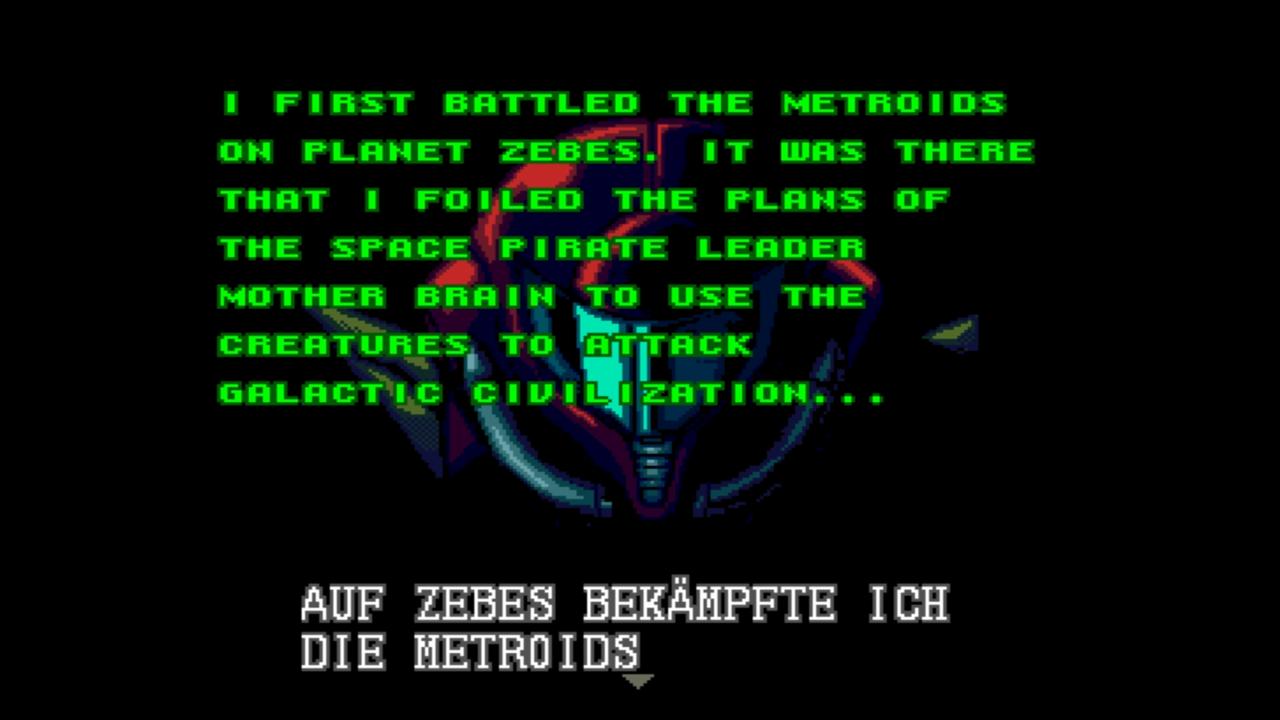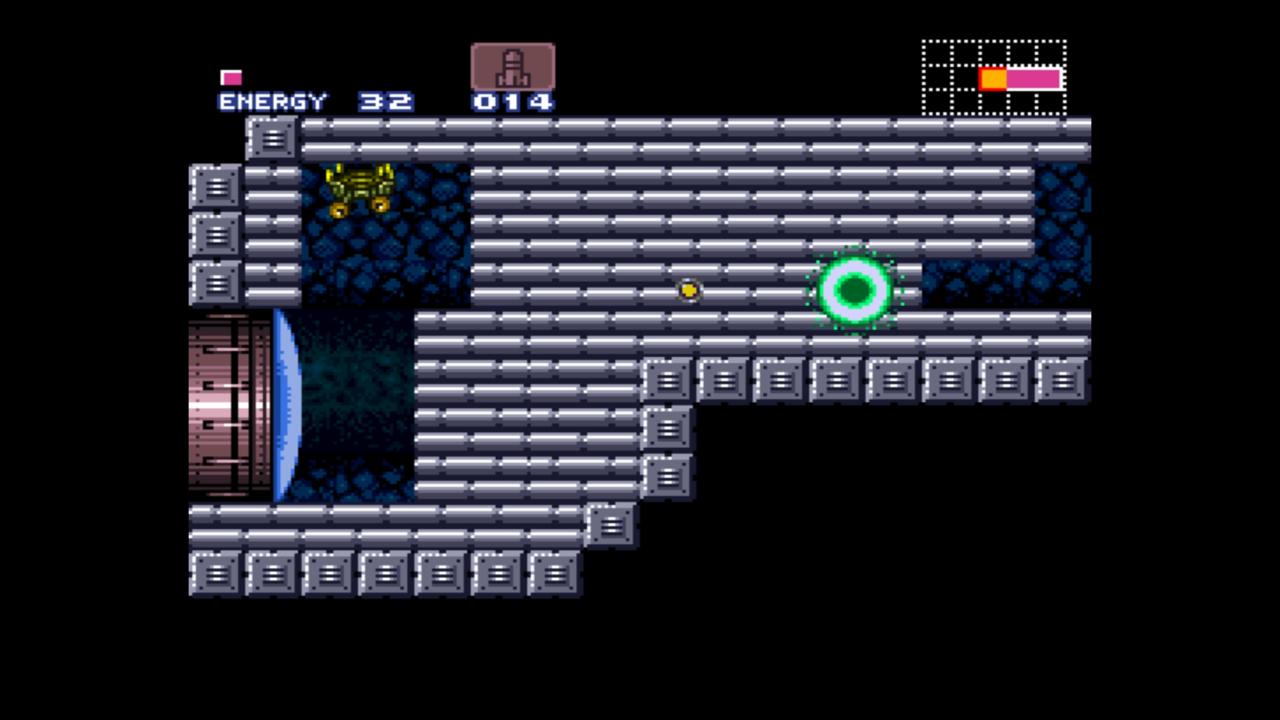Y Can't Metroid Crawl? A Newbie Plays Super Metroid
Mighty morphin' bounty hunter.
There is a sub-genre of platform games that I’m entirely unfamiliar with: Metroidvanias. Games like the eponymous Metroid and Castlevania, in which you backtrack through an interconnected world and find new items which allow for further exploration of the playable space. But it’s not just these classics that are foreign to me. Recent games that play off the Metroidvania formula, like Ori and the Blind Forest, and Axiom Verge, are replete with homages and subtle nods to the classics which are entirely lost on me.
So, I decided to fix that by venturing back to the now-21-year-old game that is widely considered the pinnacle of Metroidvanias: Super Metroid. What follows are my four most significant, raw impressions of the game, coloured by the perspective of over two decades of experience with advancement in game design and accessibility.

1. This Introduction Is All Over The Shop
The first thing I’m struck by is the amount of crawling-text exposition as the game begins. Super Metroid opens as Samus recounts her previous missions (of which there were two, unbeknownst to me--I had assumed Super Metroid was the second in the series). If I had played Metroid and its sequel on the NES, I'm sure it would be cool to see key moments from those games recreated in Super Metroid's graphics during Samus' flashbacks. Mostly, I just want the game to begin.
Once it does, the intensity ratchets up in a wholly unexpected way. No sooner am I experimenting with the finicky controls than a dragon-like creature which looks like the final boss appears, and a self-destruct timer starts. As I hot-foot it back the way I came, with the level collapsing around me, I'm wondering why something that feels like a grand finale is happening as soon as the game starts. Suddenly, the entire level begins to tilt to the right--something I'm surprised was even possible to render on the Super Nintendo. I hop in my ship, fly away from a massive explosion, land on planet Zebes (which I pronounce "zeebs" in my head) and wonder what just happened.

2. This Game Is Excellent At Teaching Without Telling
Aside from the text popups that appear when finding a new item, Super Metroid is surprisingly adept at encouraging you to learn through experimentation and discovery. There is usually a place to use a new item as soon as you get it, immediately communicating its intended function. Coloured environmental cues serve their purpose without being distractingly obvious--I knew the green-tipped super missile would open green doors, for instance. Not knowing you can go behind some tiles until you see an enemy doing just that is genius.
Super Metroid is surprisingly adept at encouraging you to learn through experimentation and discovery.
It's not all easy learning, however. The walls that can be destroyed are frustratingly inconsistent in their design--especially since the environment palette changes so frequently. Not every type of damage will destroy every type of destructible object, which led me to waste much time and ammo shooting and bombing every suspicious piece of wall and floor. Some of the terrain even requires multiple actions to destroy, such as first revealing a tile with a bomb, and then destroying that tile with a super missile. Argh!

3. I Hate These Controls
I cannot stand Super Metroid's 8-way aiming system. In a world with twin-stick controls and 360 degrees of precision, having to line an enemy up in one of the ordinal directions is frustrating. This is compounded by the fact that pointing in one of those directions with the D-pad also causes you to move, while using the shoulder buttons to lock your aiming diagonally up or diagonally down becomes finicky when ten alien bats are swooping at you. I'm still struggling to get used to the air control and strange jump speed acceleration, and the fact that you can't aim directly down without jumping frustrated me even further. Plus, having to press the down key multiple times to enter the morph ball mode feels cumbersome, especially in a boss battle.
Speaking of boss battles, I had no idea I'd be experiencing something similar in multiple ways to Bloodborne. Not only are these bosses hard, but the rather limited save points meant I was traversing the same route to the boss room multiple times after multiple deaths. I became more efficient at getting through that path while losing as little health and using as few resources as possible, in exactly the same way I found myself doing in From Software's action role-playing game. And, just as Bloodborne intimidated me with towering enemies, so too did Super Metroid. There's one boss--a giant green lizard thing--who starts out occupying just one room. After his first phase, the walls crumble away and the arena becomes four times as large, and his full form bursts upward from the ground to leer over you. I was delightfully surprised that a game this old could still impress me with a sense of scale by playing upon my expectations like this.

4. There Are So Many Small, Thoughtful Details
I love the way Samus' arm cannon expands a couple of pixels when you prime a missile for launch. I love the little stone skulls embedded in the walls that turn their heads to follow you. I love that some enemies explode into little chunks which can still hurt me if they bounce in my direction. I love that reaching a dead end causes me to speculate about the kind of ability I'll find next which will let me push forward. I love that my ship is actually a save point, and that I need to make multiple trips back to it to resupply over the course of the game. I love that at one point, you cross through just a single screen that puts you in a glass tunnel underwater, before returning to some dark caverns. I love that different enemies require the use of different abilities, like those green mantis things that block your blaster shots and need to be taken out with morph bombs.
I love that reaching a dead end causes me to speculate about the kind of ability I'll find next which will let me push forward.
But then, there are some details which I found confusing. When I opened the map screen, I thought the "S" stood for "Samus" (it's actually "Save room") and the "M" stood for "Metroid" (it's actually "Map room"). Why are Space Pirates following the orders of a giant brain in a jar? Why do pink doors make me use five missiles to open them? Is the Y button ever used for anything at all?
Oh, and I still can't figure out why Samus' clothes fall off when she dies. But who am I to question the classics?
Got a news tip or want to contact us directly? Email news@gamespot.com
Join the conversation